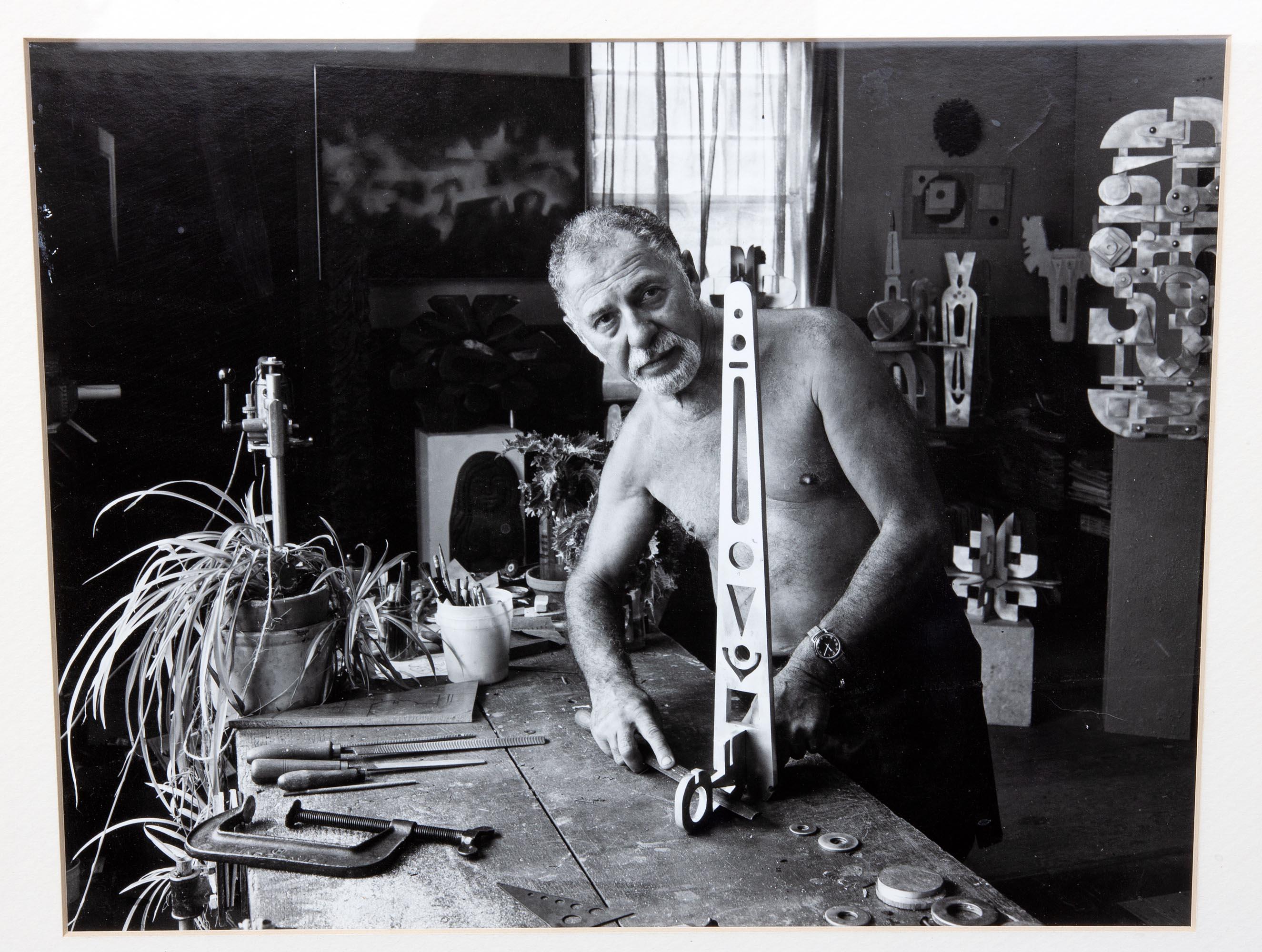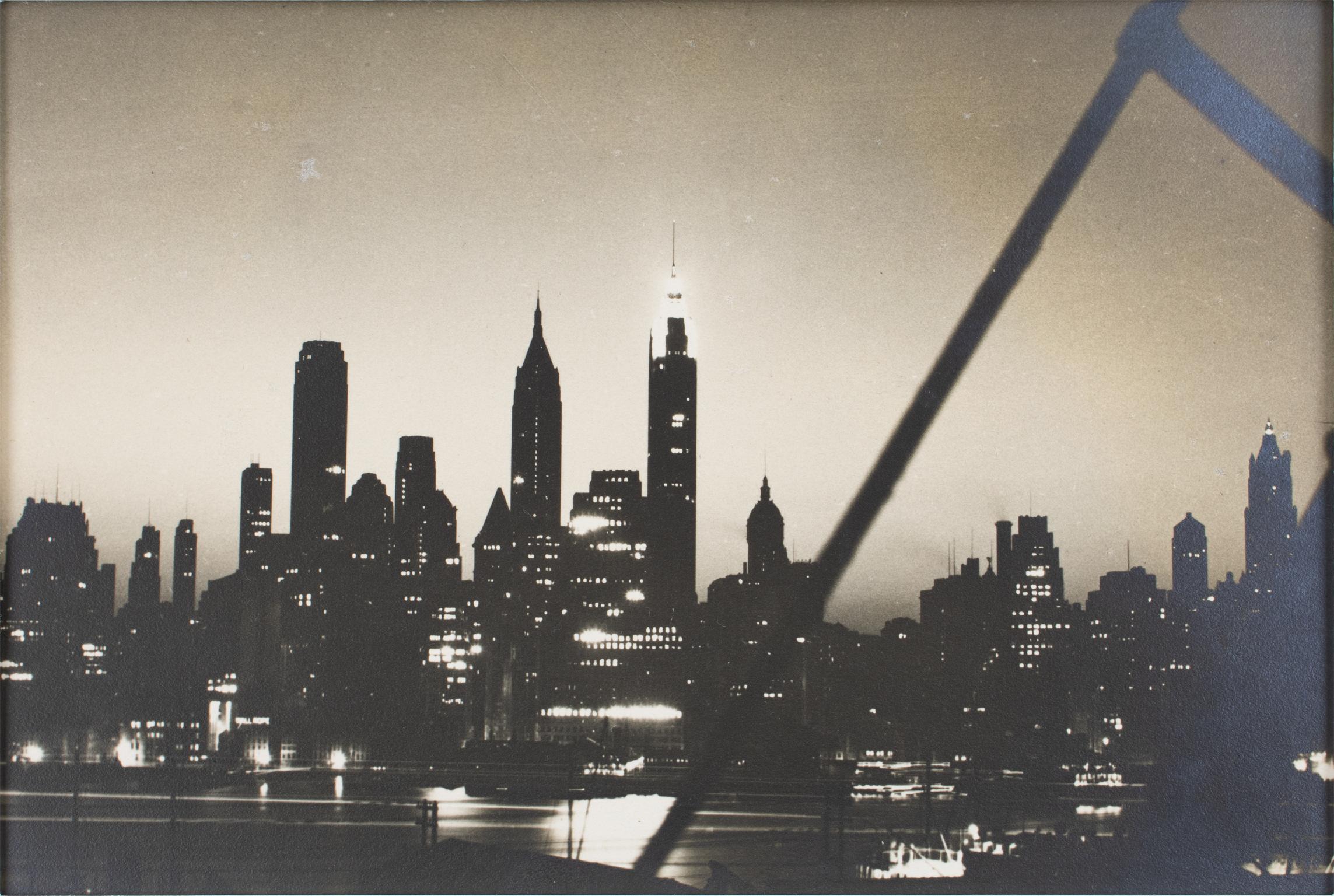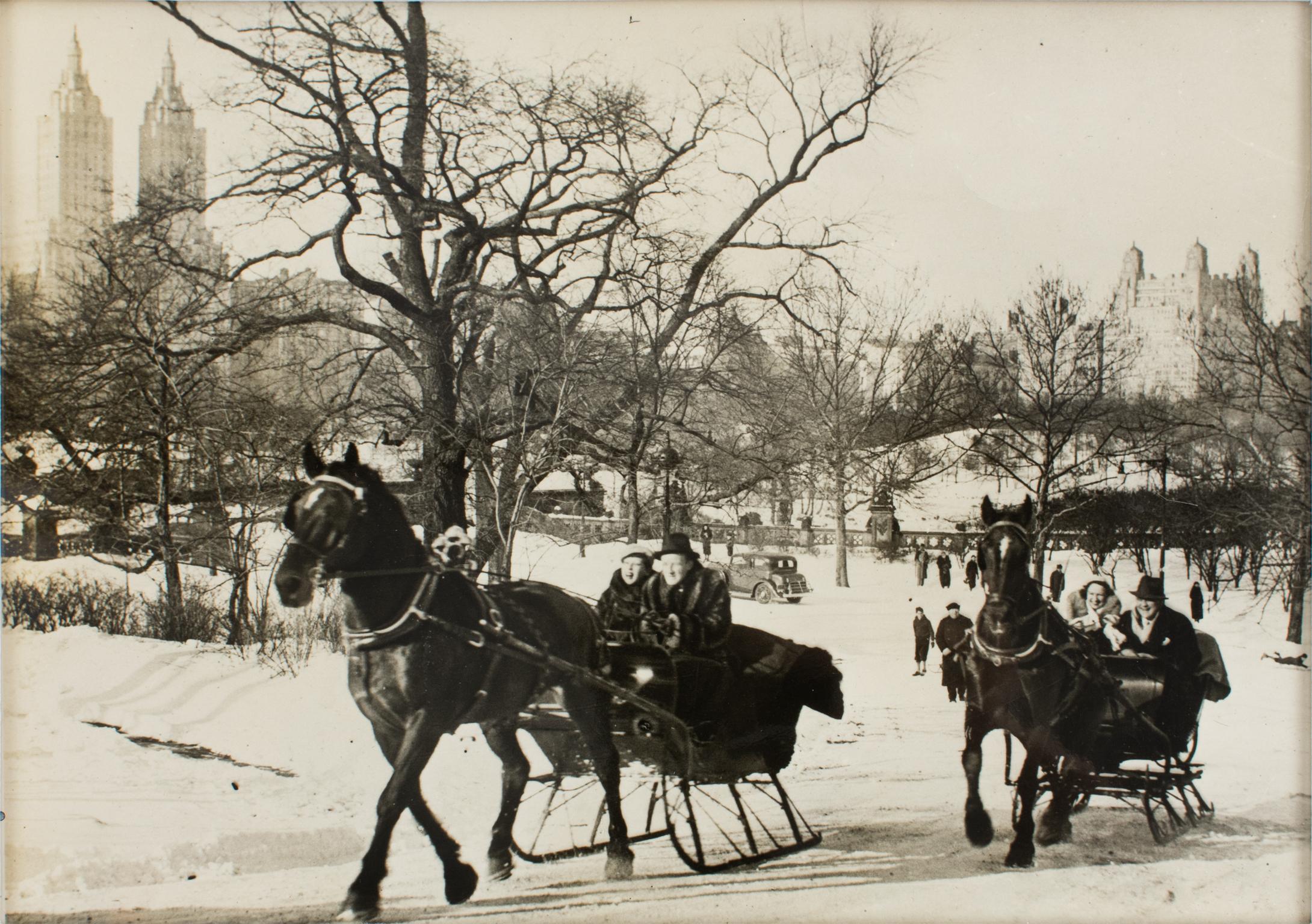Items Similar to ‘The Picture Frame’ by Arthur Steel Limited Edition
Want more images or videos?
Request additional images or videos from the seller
1 of 5
Arthur Steel‘The Picture Frame’ by Arthur Steel Limited Edition1969 (printed later)
1969 (printed later)
About the Item
‘The Picture Frame’
by Arthur Steel
Paper size: 20 x 13.5 inches / 51 x 34 cm
Framing options available.
Note: Image unearthed January 2013.
Arthur recalls: “I past a shop in London that sold nothing but antique picture frames. I’ve often used picture frames to frame a picture but these were huge picture frames and I started to think of what I could use them for, a scene of some kind. So, I chose The House of Commons. The men came in the van with the picture frame and I asked them to walk across the bridge so that I could get The House of Commons, Big Ben, in the frame and perhaps make a nice picture out of it. I had nothing to do with the Policeman on the horse, I only took a few shots, the two girls walking across the bridge were walking across the bridge, the two fellas stepped out, paused and the horse came past and I think the horse must have got a bit of a fright because he’s raring up. I had a picture!”
Camera: Leica 35mm.
Film stock: Kodak Tri-X Pan.
Location: Westminster Bridge, London.
Year: 1969.
Collection: Platinum.
Print Type: Fibre-based Harman Galerie FB Digital.
Printed by: Metro Imaging.
Limited Editions:
All prints are limited editions, no further prints are produced once sold.
60″ prints / edition of 5
50″ prints / edition of 10
40″ prints / edition of 20
30″ prints / edition of 30
20″ prints / edition of 50
12″ prints / edition of 50
Bespoke: All prints are bespoke and printed to order.
Presentation: 12 and 20 inch prints are titled, numbered, signed and carefully enfolded in acid free tissue paper, supplied flat in an acid free 4mm 3-ply box for delivery and storage purposes. The boxes are ideal for gift wrapping. The larger 30, 40, 50 and 60 inch prints are also titled, numbered, signed and carefully enfolded in acid free tissue paper and inserted into a rigid 4mm thick protective cardboard tube for delivery.
Certificate of Authenticity: Each print acquired from The Arthur Steel Archive is accompanied by an individually signed Certificate of Authenticity.
Copyright: © Arthur Steel / The Arthur Steel Archive.
Elizabeth Tower: Big Ben is the nickname for the Great Bell of the clock at the north end of the Palace of Westminster in London and is usually extended to refer to both the clock and the clock tower. The tower in which Big Ben is located is officially called the Elizabeth Tower; originally just the Clock Tower, it was renamed in 2012 for the Diamond Jubilee of Elizabeth II.
The tower was designed by Augustus Pugin in a neo-gothic style. When completed in 1859, it was, says horologist Ian Westworth, “the prince of timekeepers: the biggest, most accurate four-faced striking and chiming clock in the world”. It stands 315 feet (96 m) tall, and the climb from ground level to the belfry is 334 steps. Its base is square, measuring 39 feet (12 m) on each side. Dials of the clock are 23 feet (7.0 m) in diameter. On 31 May 2009, celebrations were held to mark the tower’s 150th anniversary.
Big Ben is the largest of five bells and weighs 13 1⁄2 long tons (13.7 tonnes; 15.1 short tons). It was the largest bell in the United Kingdom for 23 years. The origin of the bell’s nickname is open to question; it may be named after Sir Benjamin Hall, who oversaw its installation, or boxing heavyweight champion Benjamin Caunt. Four quarter bells chime at 15, 30 and 45 minutes past the hour and just before Big Ben tolls on the hour. The clock uses its original Victorian mechanism, but an electric motor can be used as a backup.
A British cultural icon, recognised all over the world, the tower is one of the most prominent symbols of the United Kingdom and parliamentary democracy, and it is often used in the establishing shot of films set in London. The clock tower has been part of a Grade I listed building since 1970 and a UNESCO World Heritage Site since 1987.
On 21 August 2017, a four-year schedule of renovation works began on the tower, which are to include the addition of a lift. There are also plans to re-glaze and repaint its dials. With a few exceptions, such as New Year’s Eve and Remembrance Sunday, the bells are to be silent until the work has been completed in the 2020s.
Westminster Bridge is a road-and-foot-traffic bridge over the River Thames in London, linking Westminster on the west side and Lambeth on the east side.
The bridge is painted predominantly green, the same colour as the leather seats in the House of Commons which is on the side of the Palace of Westminster nearest to the bridge. This is in contrast to Lambeth Bridge, which is red, the same colour as the seats in the House of Lords and is on the opposite side of the Houses of Parliament.
In 2005–2007, it underwent a complete refurbishment, including replacing the iron fascias and repainting the whole bridge. It links the Palace of Westminster on the west side of the river with County Hall and the London Eye on the east and was the finishing point during the early years of the London Marathon.
The next bridge downstream is the Hungerford footbridge and upstream is Lambeth Bridge. Westminster Bridge was designated a Grade II listed structure in 1981.
- Creator:Arthur Steel (1936, British)
- Creation Year:1969 (printed later)
- Dimensions:Height: 13.5 in (34.29 cm)Width: 20 in (50.8 cm)
- More Editions & Sizes:30 x 20, limited edition of 30Price: $3,59040 x 27, limited edition of 20Price: $4,79050 x 34, limited edition of 10Price: $8,38060 x 40.5, limited edition of 5Price: $11,980
- Medium:
- Movement & Style:
- Period:
- Framing:Framing Options Available
- Condition:
- Gallery Location:London, GB
- Reference Number:
About the Seller
4.9
Platinum Seller
These expertly vetted sellers are 1stDibs' most experienced sellers and are rated highest by our customers.
Established in 2011
1stDibs seller since 2016
628 sales on 1stDibs
Typical response time: 1 hour
- ShippingRetrieving quote...Ships From: London, United Kingdom
- Return PolicyA return for this item may be initiated within 7 days of delivery.
More From This SellerView All
- Slim Aarons Official Estate Print - NY Apartments - OversizeBy Slim AaronsLocated in London, GBNY Apartments A block of apartments on Park Lane in New York. The building is stepped so that the design includes balconies for flats on each floor. Slim Aarons silver gelatine f...Category
1950s Modern Landscape Photography
MaterialsBlack and White, Silver Gelatin
- V&A Museum London 'HRH Princess Elizabeth' by Cecil BeatonBy Cecil BeatonLocated in London, GB'HRH Princess Elizabeth' by Cecil Beaton (1904-80) Princess Elizabeth, later Queen Elizabeth II, in a Norman Hartnell gown, Buckingham Palace, Engla...Category
1940s Modern Black and White Photography
MaterialsSilver Gelatin
- Slim Aarons Limited Estate Print - Jamaica Sea Sailing - OversizeBy Slim AaronsLocated in London, GBJamaica Sea Sailing Two men sailing their yacht ‘Eel II’ in Jamaica. Slim Aarons silver gelatine fibre based print Printed 2024 Slim Aarons Estate Edition Produced utilising the...Category
1950s Modern Landscape Photography
MaterialsBlack and White, Silver Gelatin
- Kings Of Hollywood Slim Aarons Official Limited Estate EditionBy Slim AaronsLocated in London, GBKings Of Hollywood 1957 Slim Aarons Limited Estate Edition Clark Gable (1901 – 1960), Van Heflin (1910 – 1971), Gary Cooper (1901 – 1961) and James Stewart (1908 – 1997) enjoying...Category
1950s Modern Black and White Photography
MaterialsBlack and White, Silver Gelatin
- Slim Aarons 'The Carlton Hotel' Official Limited Estate EditionBy Slim AaronsLocated in London, GB'The Carlton Hotel' 1955 Slim Aarons Limited Estate Edition A Cadillac with Florida plates parked outside the Carlton Hotel, Cannes, France, circa 1955. Slim Aarons silver gelatine...Category
1950s Modern Black and White Photography
MaterialsSilver Gelatin
- Slim Aarons Official Estate Print - Pulitzer On The Beach - OversizeBy Slim AaronsLocated in London, GBPulitzer On The Beach Patsy Pulitzer at Palm Beach, Florida, circa 1955. Photo by Slim Aarons Slim Aarons silver gelatine fibre based print Printed Later Slim Aarons Estate Edi...Category
1950s Modern Figurative Photography
MaterialsBlack and White, Silver Gelatin
You May Also Like
- Pictorialist Photography, "Pensive Woman"Located in Rochester, NYPictorialist photograph of a young woman. Silver print in the original oak frame. Inscribed on reverse R.S. Paddock, Early 20th century. Pictorialism is the name given to an interna...Category
1910s Modern Black and White Photography
MaterialsSilver Gelatin
- Vintage Photograph of a Modern SculptorLocated in Rochester, NYVintage photograph of an unknown abstract sculptor. In metal frame.Category
Mid-20th Century Modern Black and White Photography
MaterialsSilver Gelatin
- Orpheus #1 - Balanchine Ballet with Francisco Moncion and Nicholas MagallanesBy George Platt LynesLocated in Glenford, NYGeorge Platt Lynes 1950 Photograph #1 of Balanchine Ballet ‘Orpheus’. George Platt Lynes rare original vintage 1950 silver gelatin photograph of nude dancers Francisco Moncion and Nicholas Magallanes in George Balanchine's iconic mid-20th Century ballet Orpheus. Stamped on verso in dark blue ink at upper center, "GEORGE PLATT LYNES/145 EAST 52 STREET NEW YORK”. Photo shoot took place in NYC on March 21, 1950. Costumes and Set by ISAMU NAGUCHI. Photo is 7 5/8 x 9 1/4 inches, soft satin finish in excellent condition. This photograph is one from a collection of 14 different poses in this series of nude photographs of Moncion and Magallanes in Orpheus by Platt Lynes. Complete collection is available on request. Photographs from this celebrated series are in the 20th Century collections of the Metropolitan Museum of Art (NYC), Museum of Modern Art (MOMA, NYC), and the Columbus Museum. George Platt Lynes (1907–1955), was a gregarious American portrait, dance, fashion, and male nude photographer whose career spanned the late 1920s through the early 1950s. From age eighteen, Lynes entered the cosmopolitan world of the American expatriate community in Paris when he became acquainted with the salon of Gertrude Stein and Alice B. Toklas. He began photographing authors like Stein, Jean Cocteau, André Gide, and Colette and soon established himself as one of the premier fashion photographers in the Condé Nast stable, documenting the ballet companies of George Balanchine/Lincoln Kirstein, and pursuing a private obsession with seductive images of young male nudes rarely published in his lifetime. Orpheus represents a major 20th Century artistic collaboration between composer Igor Stravinsky, choreographer George Ballanchine, and artist/designer Isamu Naguchi. Orpheus is a thirty-minute neoclassical ballet composed by Igor Stravinsky in collaboration with choreographer George Balanchine in Hollywood, California in 1947. The work was commissioned by Ballet Society, later renamed New York City Ballet, which Balanchine founded with Lincoln Kirstein. Sets and costumes were created by Isamu Noguchi. Noguchi’s lyre harp from the production became the symbol of the New York City Ballet. Francisco Moncion (July 6, 1918 – April 1, 1995) was a charter member of the New York City Ballet. Over the course of his forty year career, choreographers George Balanchine, and Jerome Robbins in the New York City Ballet created 22 major roles for Moncion including the Dark Angel...Category
1950s Modern Black and White Photography
MaterialsSilver Gelatin
- Sled Race in Central Park, 1934 Silver Gelatin Black-White Photography FramedLocated in Atlanta, GAAn original silver gelatin black and white photograph by Press Agency New York Times office in Paris (Wide World Photos.) Sled race in Central Park, New York, 1934. Features: Original silver gelatin print photography framed. Press Agency New York Times Office in Paris - Wide Wolrd Photos. Photographer: unknown. Title: Sled Race in Central Park, 1934. Provenance: Private collection. Frame Size: 20.63 in high (52.5 cm) x 16.75 in wide (42.5 cm) x 1.57 in deep (4 cm). Image Size: 5.51 in high (14.2 cm) x 7.48 in wide (19.8 cm). French typed legend, copyright credit, and ink stamp at the back that read: "Course de traineaux dans un parc a New York. Sur la neige qui recouvre les allées du Central Park Casino a new York, un groupe d'artistes a eu l'idée d'organiser une course de traineaux - voici une vue de la course - Photos NYT - NY 5/1/34 - SP." (Sled race in a New York park. On the snow covering the paths of the Central Park Casino in New York, a group of artists had the idea of organizing a sled race - here is a view of the race - Photos NYT - NY 5/ 1 /34 - SP.) Note: The Central Park Casino, originally the Ladies' Refreshment Salon, was a restaurant in Central Park, near East 72nd Street in Manhattan, New York City. The name of the building came from the Italian for "little house," but the Casino itself was never a gambling business. Originally, Calvert Vaux designed the building in 1862 as part of the Greensward Plan for Central Park. The original plan was a wooden chalet-style structure with a broad hip roof. Before construction began, however, Vaux decided that a more permanent building was needed. The following year, with the assistance of Edward C. Miller and Jacob Wrey Mould, the Casino was redesigned as a Gothic Revival stone structure. The building opened in early 1864 as a restaurant planned for unaccompanied female visitors to Central Park and was one of Central Park's three original restaurants. Soon, it was patronized by both men and women. The building that housed the Casino belonged to the City of New York, and the City often leased the Casino to independent operators. In the early 1920s, the Casino was rundown and renovated during the winter of 1921–1922. Jimmy Walker, mayor of New York City during the late 1920s, frequented the Casino and reportedly spent more time there than in New York City Hall. Besides entertaining elite guests in the restaurant, Walker had an office in the Casino and conducted city administration there while meeting with political cronies. In 1929, Walker terminated the lease of C.F. Zittel and allowed a friend, Sidney Solomon, to transform the Casino into one of New York's most expensive nightclubs. In February 1929, they released the new project. Solomon changed the Casino's interior using a design from Viennese designer Joseph Urban, though he kept the exterior mostly the same. The renovated Casino reopened on June 4, 1929. When the Great Depression hit four months after the Casino reopened, the nightclub faced increasing criticism for operating on city land while maintaining prices only the wealthiest New York residents could afford. In 1930, as part of the enforcement of Prohibition, the United States government raided the Casino and seized alcoholic beverages. Walker's successor, Fiorello H. La Guardia, and his parks commissioner Robert Moses, who held a vendetta against Walker, wanted to tear down the Casino to build a playground on the site. In 1934, Moses served an eviction order on the Casino's management. When the Parks Association of New York City objected...Category
1950s Modern Black and White Photography
MaterialsSilver Gelatin
- USS Roosevelt, New York Navy Day 1945, Silver Gelatin B and W Photography FramedBy Associated PressLocated in Atlanta, GAAn original silver gelatin black and white photograph by Associated Press Photo. The USS Roosevelt aircraft carriers on the Hudson River, New York, during Navy Day...Category
1940s Modern Black and White Photography
MaterialsSilver Gelatin
- Hudson River, New York Navy Day 1945, Silver Gelatin B and W Photography FramedBy Associated PressLocated in Atlanta, GAAn original silver gelatin black and white photograph by Associated Press Photo. The Hudson River in New York during Navy Day in October 1945. Features: Original Silver Gelatin Print...Category
1940s Modern Black and White Photography
MaterialsSilver Gelatin
Recently Viewed
View AllMore Ways To Browse
All Steel
White Seat
Black Leather Large
Red Black Leather
Black Diamonds Sets
Red White Green
Black Victorian
Vintage Steel Sign
Vintage Steel Signs
Antique Original Black
Steel Works
White Painted Antique
Antique Black Paint
Antique Black Painted
Black Painted Antique
Antique Black Frame
Two Seat Black
Vintage Steel Box




